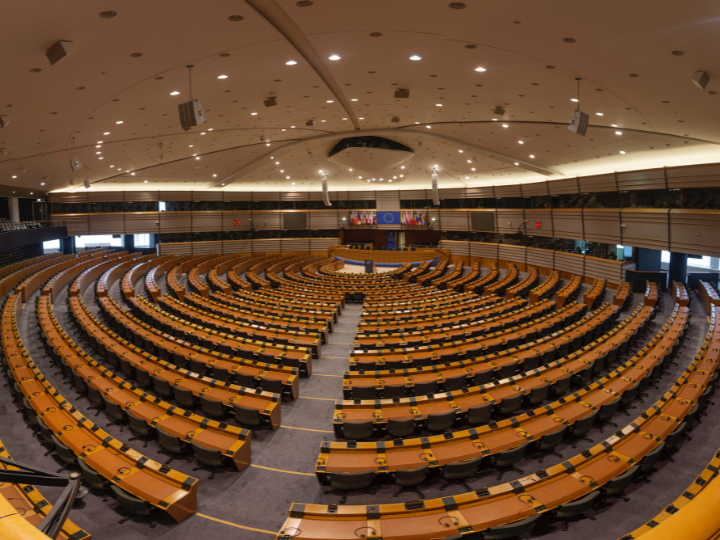by Sean Goulding Carroll
EU regulation failed to meaningfully reduce the level of carbon emissions from combustion engine vehicles over the last 12 years, making the uptake of zero-emission vehicles imperative to the bloc’s climate goals, a new audit has found.
In a report released on Wednesday (24 January), EU watchdog the European Court of Auditors (ECA) looked at the bloc’s progress in reducing CO2 emissions from cars.
While vehicles have become more efficient in the last decade, efficiency gains have been undermined by the increase in the average weight and size of passenger cars, according to the ECA.
Auditors estimate that the average car mass increased by around 10% between 2011 and 2022.
“Continuous improvements in engine technology and the introduction of hybrid powertrains have made engines more efficient, but the increased vehicle mass coupled with more powerful engines outweighs the technological progress made,” the report states.
Over the last decade, emissions have remained constant for diesel cars, while they decreased by only 4.6% for petrol cars.
“A true and tangible reduction in cars’ CO2 emissions will not occur as long as the combustion engine prevails, but at the same time, electrifying the EU’s car fleet is a major undertaking,” said Pietro Russo, the ECA member who led the audit.
Hybrid cars, touted as a clean solution by the car industry by combining both drivetrain options, were slammed in the report as much more polluting than advertised.
For plug-in hybrid vehicles, the average gap between laboratory and real-world emissions was around 250%, according to auditors. Considering such vehicles to be low-emission benefits manufacturers at the expense of the climate, auditors concluded.
Emissions gap
The analysis also found that there has been a major gap between vehicle emissions declared by manufacturers as recorded in laboratory settings and those emitted in real-world conditions.
Issues surrounding laboratory emissions testing gained headlines in 2015 in the wake of the so-called “dieselgate” scandal. Certain automakers, including German giant Volkswagen, were found to have manipulated their vehicles’ engines to artificially reduce emissions during lab tests.
Following the scandal, steps were taken to strengthen testing requirements. Auditors found that new measures instituted in 2017 had helped to narrow the gap between manufacturers’ carbon emissions declarations and the on-the-road reality.
Since 2022, the Commission has collected information on emissions from on-board fuel consumption metres installed in new vehicles, providing a more accurate picture of vehicle emissions during use.
If carmakers are found to be in breach of CO2 emissions limits, they face penalties in the form of fines, known as excess-emissions premiums.
In 2021, transport emissions accounted for 23% of the EU’s total greenhouse gas emissions, with passenger cars responsible for more than half of this figure.
Shortcomings in certifications
Auditors visited three EU countries to gain a better understanding of the type-approval process, which certifies that vehicles on EU roads meet the requisite CO2 and pollution standards.
While Germany was compliant, it was found that type-approval authorities in Italy and the Netherlands did not carry out sufficient tests to ensure that the CO2 levels declared by manufacturers were accurate.
Manufacturers’ tests are supposed to be verified by type-approval authorities, who attend these tests in person. While German authorities witnessed 79 such tests between 2020 and 2021, Italian authorities attended only two. Dutch authorities did not attend any.
The lack of attendance from Dutch and Italian authorities “limits the assurance that the vehicle CO2 emissions declared by manufacturers on certificates of conformity are correct,” states the report.
It was also found that the European Commission lacked knowledge of how (or if) member states were carrying out these type-approval checks, which meant the EU executive had limited data from which to propose improvements.
Recommendations
To help the EU meet its goals of slashing transport emissions, the ECA recommends the Commission follow up with member states to ensure they are carrying out required emissions conformity assessments.
The ECA also wants to see the Commission provide consumers with information on real-world vehicle fuel consumption, a measure they say would encourage manufacturers to better align laboratory outcomes with carbon emitted during real driving conditions.
To more quickly reduce the emissions of cars on the road, the auditors recommend that the current fleet-based targets for manufacturers, based on average CO2 reductions, be replaced with targets for a minimum share of zero-emission vehicles.
In addition, a “real-world CO2 emissions” cap should be introduced for all combustion engine cars, including hybrid vehicles.
Auditors also urged the Commission to support member states in switching to a standardised electronic format for the provision of type approval data.
While the uptake of electric vehicles – which has jumped from around one in every 100 new car registrations in 2018 to almost one in seven in 2022 – is driving the majority of carbon emissions reduction, it faces challenges to overtake combustion engine vehicles, auditors warn.
This includes the higher purchase price of electric vehicles, insufficient charging infrastructure in most member states, and issues surrounding battery availability, primarily due to the EU lacking critical raw materials.
*first published in: Euractiv.com




 By: N. Peter Kramer
By: N. Peter Kramer

